The controversial history of Bow Road tube station
With its red brick exterior and candycane-esque hexagonal pillars resembling a circus, Bow Road tube station has captured the hearts of Bow Quarter residents and Instagrammers alike, but its construction caused an outcry.
Its playful aesthetic, which led it to become a Grade II listed building from 1973, disguises its unusually turbulent history including mass eviction. Bow Road tube station is, like many landmarks in our area, more than meets the eye.
The tube station we know and love today that now carts customers and commuters along the District and Hammersmith and City lines, opened in 1902; its ownership transferred to London Underground in 1950. It’s the closest station for those visiting Victoria Park, known as ‘the people’s park of East London’ and Roman Road market.
Back at the beginning of the 20th century, transport in Bow looked very different to how it does today. People moved around the city on horse-drawn omnibuses and there was even a horse-powered tram that took passengers from Bow to Whitechapel.
The growing underground railway network, which at the time consisted of the District Line terminating in Whitechapel, wanted to reach further east. So from Whitechapel, the Whitechapel and Bow Railway – that was later incorporated into the District Line – would travel underground through Whitechapel Road and Mile End road until it entered Bow Road, where it would emerge from underground to head south east. Bow Road tube station was also incorporated into the Hammersmith & City line after 1936.
In April 1897, the Whitechapel and Bow Railway Act was passed, extending the underground network by two miles to reach Bow Road tube station. This Bill gave the railway company pervasive powers ‘to acquire ‘by compulsion or agreement… lands with buildings thereon, in the parish of Saint Leonard Bromley, including Mornington Road’ – which in those days was a tree-lined street dotted with grand houses, some 40 years old, others newly built.
Because of this, a third of the houses on Mornington Road were demolished and a railway bridge and a new road – Eleanor Street – were created. Five more of Mornington Road’s houses were lost during the Blitz and four more were knocked down to make way for the Thames Magistrates Court in 1990.
The destruction of local homes caused an outcry. At a general meeting on the 23 August 1901 of the Metropolitan District Railway Company, the Chairman J Forbes resigned, following his realisation of how the company had acted.
Eventually, Whitechapel and Bow Railway were forced to provide housing for those they had displaced. At the north End of the station, two blocks of flats were constructed called Wellington Buildings, which can still be seen towering over Bow Road tube station today.
Despite its contested beginnings, Bow Road tube station is an incredibly important node in London’s transport system, carting east end dwellers to and from the city. Every hour, 36 trains pass through its two platforms, transporting passengers down the 40-mile-long District line from Upminster to Earl’s Court and travelling the Hammersmith and City line’s 15.8 miles length from Hammersmith to Barking.
Did you know, the tunnel where trains travelling westbound from Upminster and Barking enter is also the steepest of the tube network, with a gradient of 1 in 28? This station is also referred to in a number of books such as the children’s book Guilty! by Ruth Thomas and The Golden Scorpion by Sax Rohmer.
Though, this tube station is best known for its cylinders pillars of green and yellow and the welcomed sunlight filtering through its partially covered, slate roof.
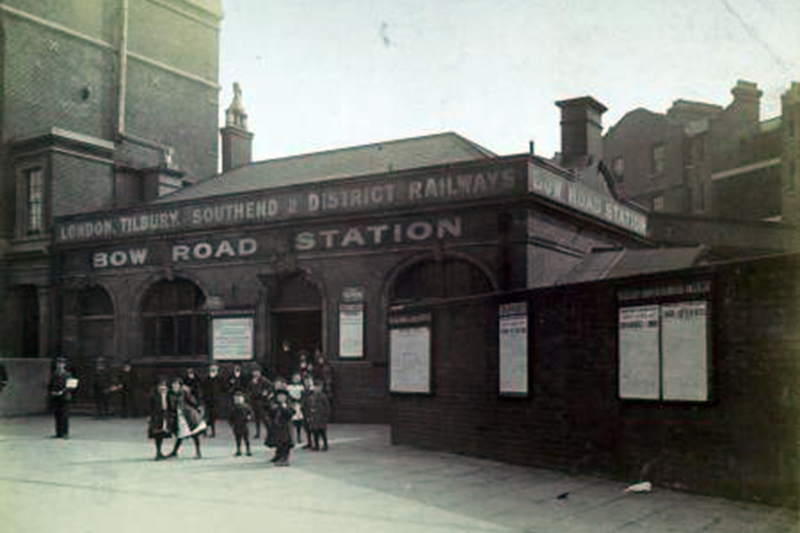
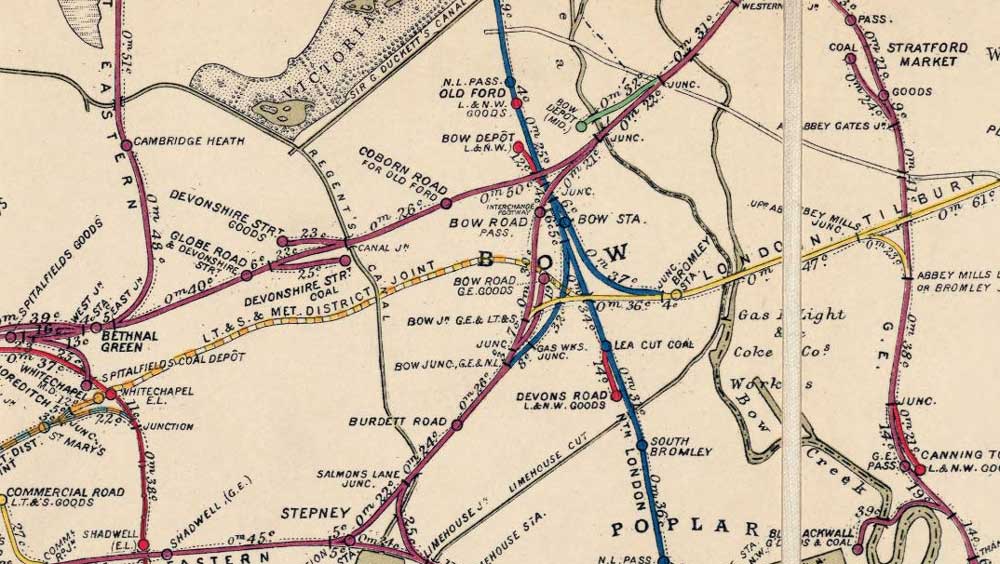
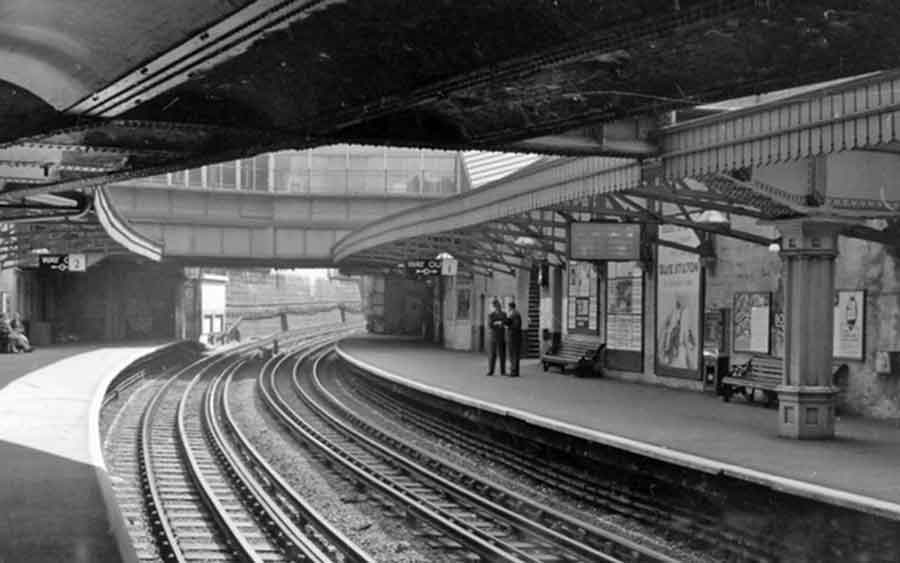
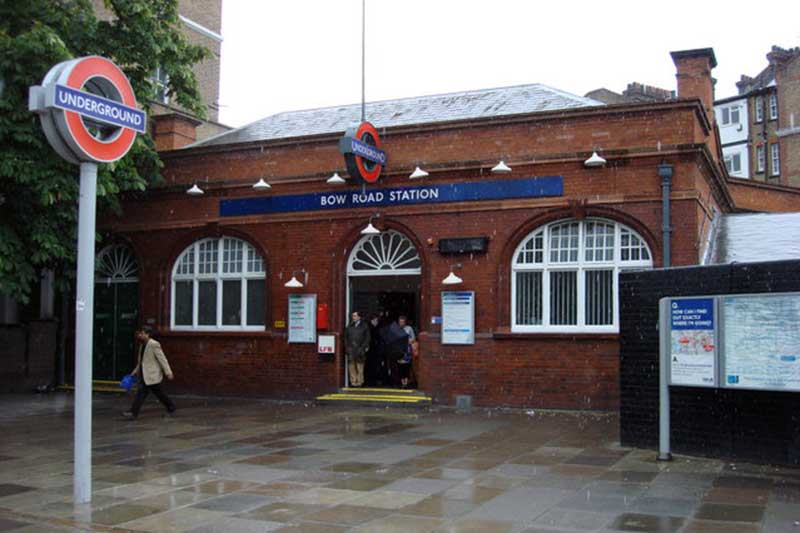
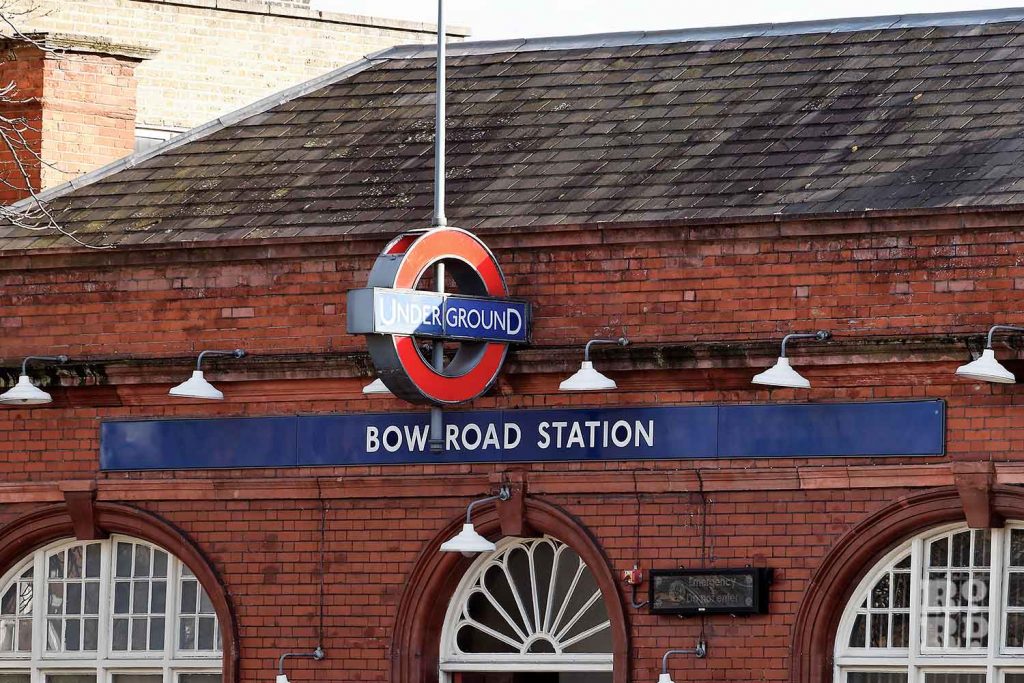
Enjoyed this station’s fascinating history? Found out the story behind Mile End tube here.

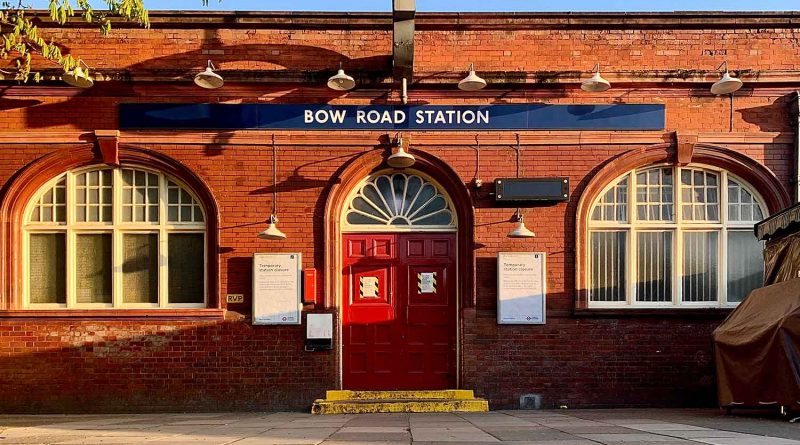

Both Mile End and Bethnal Green tube stations are closer to Vicky Park then Bow Road.
The history of the Wellington Buildings is fascinating, thanks for sharing!
i am buildign this in minecraft and it is going to go directly to crystal palace